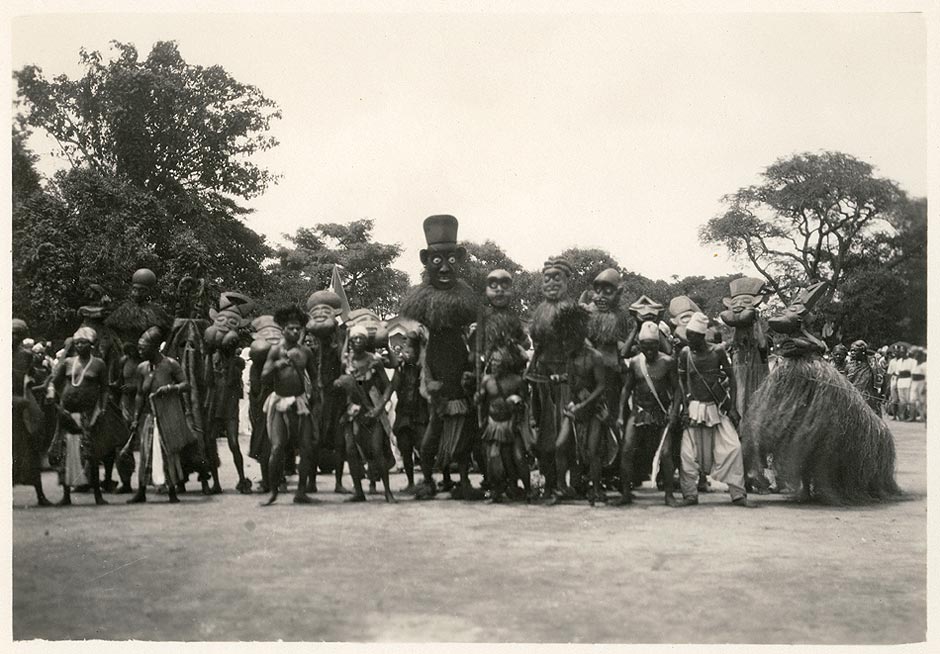The image above is subject to copyright.
Copyrights for Photographic Reproduction
Les feuillets numérisés des registres d'inventaires historiques sont soumise à un copyright.
Droits de reproduction photographique
 Inventaire original MEG. Registres tapuscrits, volumes 19 à 59
Inventaire original MEG. Registres tapuscrits, volumes 19 à 59
Registres_tapuscrits/38933.pdf
In the west of present-day Cameroon, a highland region known as the Grasslands or Grassfields shelters numerous tiny states: the Bamenda cultural area in the north, the "Bamileke" kingdoms in the south and the Bamum kingdom in the east. Before the colonial era, these kingdoms vied with one another in prestige and riches as well as in art and architecture. The kings commissioned the best sculptors and bronze casters from the neighbouring regions.

Masks performance. Bamum Kingdom. Photo by Anna Wuhrmann, Foumban, around 1920. Gifted by Josette Debarge in 1932. © Archives MEG
The Bamum kingdom, founded in the seventeenth century, is the biggest of the tiny Grassfields states. The reign of King Njoya, which began in 1887, was a crucial transitional period. Over fifteen years, this little kingdom was upset by the arrival of Islam and reformed Christianity, German, British and French colonisation, their administrations and merchants. King Njoya invented an original writing system but also innovated in architecture, cartography and pharmacopoeia and instituted major reforms. Exiled by the French colonial administration, he died in Yaoundé in 1933 and is still celebrated as a hero throughout Africa.
Alexandra Loumpet Galitzine
© 2021 Musée d'ethnographie, Genève